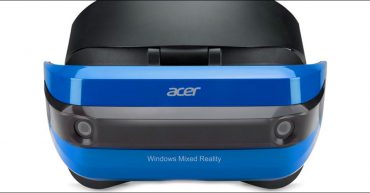News
Thousands of teenagers across the UK will have school lessons in mindfulness in an experiment designed to see if it can protect against mental illness.
By Pam Baker Parents don’t need a poll to tell them their teenagers are addicted to smartphones. After all, smartphones are a permanent fixture rather than accessories on the visages of kids of all ages these days. Even so, polls move these everyday observances from anecdotal to official problem when the numbers tilt in that direction — and a Common Sense Media poll hit full tilt. The fact that 59 percent of parents said their teens were addicted to mobile devices was not surprising. However, the fact that 50 percent of teens admitted they were addicted was shocking. While parents feel uneasy about their kids constantly being tethered to a device, most are not sure what real harm tech addiction does to teens. It turns out that it has multiple ill effects. Loss of Empathy Empathy, the ability to understand and appreciate the feelings of other people, is a trait that is essential to the well being of society. Empathy is the reason people are kind to each other, donate to helpful causes, and avoid harming other people and their possessions. When empathy is diminished or absent, the opposite often occurs — and criminal behavior can spike. Preteens who were deprived of screened devices for five days dramatically improved at reading people’s emotions (nonverbal skills) compared to children who continued using screens, according to a UCLA study. Reading someone else’s emotions correctly is a function of empathy. Without empathy and human connection, young people can become cold and cruel to others. Then, when they encounter cold and cruel responses from other young people, the cycle perpetuates itself and grows. “Lack of empathy seems to be a forerunner among cellphone users,” suggested Chantale Denis, a clinical social worker and sociologist. “Whether users are addicted or not, cellphone use can perpetuate a lack of accountability, breed irresponsible behavior, feed malevolence, and retard the ability to effectively nurture social skills inherent in our civility to be kind, thoughtful, caring, loving and understanding,” she told TechNewsWorld. Limited Career Success Smartphones summon information and entertainment on demand. Thus, instant gratification becomes a constant expectation on and offline. “Smartphones and computers socialize us into a pattern of communication that then carries over to our everyday non-tech communication lives,” observed Psychsoftpc CEO Tim Lynch, who holds a Ph.D. in psychology of computers and intelligent machines. “We expect answers right away, become impatient, use shorter sentences, get right to the point instead of engaging in small talk, and can ignore feelings of others in expressing ourselves,” he told TechNewsWorld. This lack of soft skills, which include people skills and critical-thinking skills, can interfere with getting a job and with getting promotions. “Socializing and building authentic relationships in real life with others is a muscle,” said psychologist Wyatt Fisher. “The more we use it, the better we get at it,” he told TechNewsWorld. “The reverse is also true. Therefore, as teens interact primarily with people through a screen, they often lose the skills needed to connect in person.” Emotional Disabilities Smartphones offer young people more access to the world, but they also give more of the world access to young people. Without buffers and filters, teens and preteens can be influenced in all the worse ways. Researchers reported a strong association between heavy Internet use and depression in a National Institute of Mental Health study. They also observed a link between heavy Facebook use and depressive symptoms, including low self-esteem. It’s not just the constant barrage of posts, texts, and messaging from peers and bullies on smartphones that can have a negative effect on the mental health of young people. “Social media is now a space for advertisement and influencing the masses, and teenagers are the most susceptible and vulnerable to these marketing campaigns,” said clinical psychologist David Mitroff, founder of Piedmont Avenue Consulting, “Teens are in the stage of development where they still do not have a strong sense of identity, so by constantly being on social media, they are effectively exposed to ads and models that promote unrealistic bodies or body weight,” he told TechNewsWorld. “Ultimately, these ads negatively affect younger people’s mental health due to the skewed representation of beauty or lifestyles that align with the products and services of many companies.” Breaking Smartphone Addiction Most experts advise parents to encourage their children to limit the time they spend online. “Put down the phone” has become the new “go play outside.” The key is to help kids find balance in their activities. There are specific steps parents can take to achieve that balance, said Lynette Owens, global director of Internet Safety for Kids & Families. Talk about it. Don’t just lay down rules — discuss smartphone use with kids and explain why they need to seek balance and do other things. “Help your child understand technology isn’t bad,” Owens said, “but ask them, ‘do you control it or does it control you?’” Set boundaries. Be smart and practical about it. “Not all online time is equal,” Owens said. “Sometimes kids simply have to be online for schoolwork, and other times, it’s for fun. It’s the latter that needs some boundaries.” Consider forbidding devices at the dinner table and leaving them outside bedrooms after bedtime. Set a good example. Put your own devices down. Model what you preach — it could be good for you. After all, many parents also are addicted and need to regain their life balance. Twenty-eight percent of teens think their parents are addicted to their mobile devices, and 69 percent of parents admit to checking their devices, at minimum, every hour, according to the aforementioned Common Sense Media poll. Help them find balance. Offer alternatives or suggest other activities. Find some activities that they can do alone, some they can do with friends, and others they can do with parents. Again, the keyword is “balance.” Technology is not going away. If anything, it will become more pervasive. The key is to ensure that tech remains a tool — a servant and
By John P. Mello Jr. Microsoft on Tuesday announced a refresh of its Surface Pro tablet-laptop computer. Although Microsoft said the fifth generation of the unit has been redesigned from the inside out with more than 800 new custom parts, the Surface Pro looks similar to its predecessor. “If you were looking for a major redesign of Surface, this isn’t it,” said Ross Rubin, principal analyst at Reticle Research. Nevertheless, Microsoft has made some significant improvements in the tablet cum laptop. “Overall, the new Microsoft Surface Pro is a significant, even substantial, improvement over the Surface 4,” said Charles King, principal analyst at Pund-IT. Better Battery Life Battery life has been boosted to 13.5 hours, which is 50 percent greater than the new Surface Pro’s predecessor, and 35 percent greater than its Apple rival, the iPad Pro. Microsoft has upgraded the processors in the line, too, giving the new unit 2.5 times more computational performance than the Surface Pro 3, and 1.7 times the performance of the iPad Pro. The Surface Pro models that use Intel’s 7th-generation Core m3 and i5 chips are fanless, so they’re quiet as well as powerful. The i7 model of the unit with a fan is relatively quiet, too, with a noise level of 18db. “The fanless 7th-gen Core i5 capabilities are unique in a tablet, and it’s apparent Microsoft did some serious thermal work,” said Patrick Moorhead, principal analyst at Moor Insights and Strategy. The new Surface Pro also has a high-resolution screen — 2736 x 1824 — with 267 pixels per inch, which is 50 percent more than a 12-inch MacBook. The display is enhanced by Microsoft’s PixelSense Accelerator technology, which is designed to make colors vibrant and precise. More Sensitive Pen Improvements also have been made to the Surface Pen, which is sold separately and is offered in four colors — platinum, burgundy, cobalt blue and black. With 4,096 pressure points, the pen is four times more sensitive than the original Surface Pen, Microsoft said, and with a latency of 21 milliseconds, it’s close to capturing the experience of an analog pen to paper. “The long battery life and the fanless design will be the greatest draws for this Surface Pro,” Reticle’s Rubin told TechNewsWorld. Meanwhile, “the new pen technology should resonate with those using their Surface for nuanced drawings,” he added. Drawing on the new Surface Pro is easier, too, thanks to an improved hinge that gives the unit 165 degrees of motion. Microsoft also has spruced up the keyboards for the new Surface Pro. They’re covered with Alcantara fabric, which is treated with a high-performance polyurethane coating to resist spills. Keyboard colors match those of the Surface Pen. Future LTE Support The new Surface Pro remains light and thin at 1.7 pounds and 8.5mm, and it’s going to support LTE later this year, Microsoft said. “If you preorder a unit, you will not have the option to use 4G connections,” explained Jeff Orr, senior practice director for mobile devices at ABI Research. “You can only use WiFi or Bluetooth connections.” The addition of cellular connectivity rounds out the capabilities of the Surface Pro. “If you’re talking about a truly mobile product, you should be able to connect anywhere,” Orr told TechNewsWorld. Despite its many improvements, the new Surface Pro still doesn’t support USB-C connections. “It would have been nice to have at least one USB-C port,” Pund-IT’s King told TechNewsWorld. Microsoft also has dropped numbering with this latest model, which may confuse the market in the long run. “It’s more difficult for buyers to know what is new and what is old in the channel,” Moorhead told TechNewsWorld. “Buying peripherals are more difficult, too,” he continued. “We have seen these issues with the Apple iPad, and we will see them with Surface Pro.” Refresh Needed Badly A new version of the Surface Pro was overdue. “The product line definitely needed a refresh. This brings the Surface Pro products up to spec with other Surface products,” ABI’s Orr said. “This will help Microsoft continue the momentum it’s had with Surface and help establish it in more organizations,” he added. Before the refresh, that momentum might have begun to stall. “The current Surface Pro has been around for a year and half now, so its sales began to slip because it’s old technology,” said Jack E. Gold, principal analyst at J.Gold Associates. “They really needed to update it,” he told TechNewsWorld. Microsoft began taking advance orders for the new Surface Pro Tuesday, and will start shipping units June 15. Base price is US$799 for a model with an Intel Core m3 processor, 4 GB of RAM and a 128-GB solid state drive. Keyboards are $159.99. Pricing for the Surface Pen was not announced.
By David Jones The device will be ready by the upcoming holiday shopping season. Lenovo later this year plans to launch an affordable mixed-reality headset with built-in sensors for inside-out tracking and simplified setup. Potential but Risky On the surface, the new Windows devices will have several advantages over the rival HTC Vive and Oculus Rift brands for the personal computer market, according to Piers Harding Rolls, director of games research at IHS Markit. For starters, the new Windows devices will come in with price points starting at less than $300 — significantly cheaper than the rival devices — due to the production efficiencies this new set of manufacturers can employ, he told TechNewsWorld. These new device makers also have massive go-to-market capabilities, according to Harding-Rolls, offering more exposure to VR for PC-based consumers than ever before. In addition, the inside-out tracking technology negates the need for additional sensors around a room, and the headsets can run on relatively low-powered Windows-based computers. On the flip side, there may be confusion in the marketplace among buyers who are new to VR, Harding-Rolls said. “First, the name ‘mixed reality’ on its own is likely to cause confusion for the consumer that is only beginning to understand virtual reality,” he explained. Consumers may buy these headsets expecting to use their existing computers and think they can play the best VR games, which would be possible only with a powerful computer system, Harding-Rolls pointed out. The small amount of content currently available poses another potential pitfall for OEMs trying to build demand for these products, observed Rob Enderle, principal analyst at the Enderle Group. “It all really hinges on how much money and resources Microsoft puts behind the product,” he told TechNewsWorld. Still, Microsoft may be onto something with its push for mixed-reality devices, said Ted Pollak, senior gaming analyst at Jon Peddie Research. “At some point in time, the user will decide how much real or virtualized world to tune in and out of the field of view of their display,” he told TechNewsWorld. “Virtual and augmented reality then simply become different points on the computing spectrum.”
Ever since taking an interest Linux, with the specific aim of better understanding and enhancing my personal digital security, I have been fascinated by hacker conferences. As soon as I learned of their existence, I made a point of keeping tabs on the major conferences so I could browse through the latest videos in their archive once each one wraps up. I thought that was the closest I would get to such an event, but a couple of weeks ago, I had the chance to attend one for the first time: Chicago’s THOTCON. While I’m definitely still swimming in all the experiences I had, I wanted to share a few of my observations and insights. At this point I can practically hear you asking, “Wait, you said hacker conference? For security?” So, before I go on, I should explain a bit about the interrelationship between hacking and security. Ebony and Ivory? The information security, or InfoSec, field is built on hacking. Without the latter, the former would be both impossible and pointless. This is because there are two sides to hacking. The more sensationalized of the two, often called “black hat” hacking, refers to malicious actors breaching a system without authorization either for personal gain or just to cause mayhem. The far more common variety of hacking is “white hat” hacking, often more formally known as “penetration testing,” in which experienced, professional hackers are hired by a company to hack it, without inflicting any permanent damage, in order to audit the company’s security. Obviously, there would be no need for white hat hackers if there were no black hat hackers, but because the ranks of the white hats far outnumber the black hats, we are able to enjoy what computers and the Internet have to offer in relative security. The other reason these two approaches are related is because they depend on each other. In order for the white hats to fend off the black hats, they need to understand the tactics of the black hats. Correspondingly, the black hats can operate only where the white hats have yet to probe. It’s a perpetual cat-and-mouse game, but it’s one we have to play in order to make use of the modern Internet. So what happens at a hacker conference? As I found out, quite a lot. Mainly, though, leading figures in the hacking/security community give presentations on their latest research so that attendees can hone their craft. Like at any professional gathering, there’s also a lot of networking (literally as well as figuratively). That might sound boring, but I can tell you from experience that it’s anything but! The professionals, both presenting and attending, are at the leading edge of a field which — as the recent global ransomware attack demonstrated — affects all of us every day. A Whole New World As I said, there was a lot to take in, but here are some of the aspects of the hacker con experience that made an impression on me for one reason or another. The most immediate aspect that stood out to me was the sheer amount of stimulation to be found there. In addition to a choice of three simultaneously scheduled talks to attend at any given time, attendees had the option of touring an exhibition room full of vendors, participating in a lockpicking tutorial, socializing at a full bar (open from 10 a.m.), or — last but not least — taking part in a con-wide scavenger hunt that included debugging the conference badge and deciphering hidden messages scattered throughout the area. In short, there was so much to choose from that it was overstimulating, but in a good way. Everywhere I looked, there was something new to take in, and that’s exactly why we were all there. Another thing that impressed me was the considerable range in the topics of the talks themselves. In just the presentations I saw, I heard speakers delve into everything from current vulnerabilities in Internet of Things devices to the philosophy of red team testing; from evaluating your ideas and models by attacking them from the outside to how the military is training soldiers to conduct hacking operations in open, state-on-state warfare. Some of the talks may not have been directly applicable to me, but many of them were — and all of them expanded my understanding and appreciation for the work of the InfoSec community. Specifically, the conference gave me a sense of what goes into the pipeline between Internet services and my computer, providing a more holistic look at security than simply locking down my system. Linux Love Less surprising, but still great to see, was the fact that there was so much Linux at the con! It’s only natural that Linux, an operating system that lets you infinitely tweak and fine-tune your system, would be popular among the tinkerers that are hackers. The configurability and openness of Linux lends itself well to hacking, as hackers can wield exactly the right tool for the job. Far and away the favorite OS for hacking is Kali Linux, a distribution armed to the teeth with network monitoring, forensics and injection tools. Because hackers have a way of, shall we say, “challenging” each other when assembled at an event like THOTCON, Linux is often a preferred choice for ensuring access to a computer to participate in the many puzzles and challenges offered. One of the most encouraging things I encountered at the conference was an approachable and open-minded attitude among the conference-goers. People there were extremely open to sharing their knowledge and expertise with others, and no matter what your experience level. Everyone I met there had something to teach and something to learn. There wasn’t a conversation I participated in that didn’t involve everyone leaving better off. Finally, one of the best experiences I had at THOTCON was seeing the hacker community’s very own hip hop act, Dual Core, perform during the after-party. Besides being a treasured cultural artifact from the
Essential, a company founded by Andy Rubin, the “father of Android,” on Tuesday pulled off the wraps on a new high-end smartphone. The Essential Phone, priced at US$699, includes radios for connecting to all major U.S. carriers. The unit has an almost edge-to-edge display (there’s a bit of bezel at the bottom of its screen) that wraps around the 8-MP selfie camera at the front. Built around a Qualcomm Snapdragon 835 processor, the Essential Phone comes with 4 GB of RAM and 128 GB of storage. For durability, the phone has a titanium and ceramic body, which allows it to survive drops with nary a blemish, according to the company. Magnetic Accessories Accessories can be added to the phone via a magnetic connector on its backside. Two accessories are included with the unit — a 360-degree camera and a charging dock. Also on the phone’s back is 13-MP dual sensor camera. Unlike other phones with dual-sensor cameras, which use the second sensor to take telephoto pictures or create bokeh effects, Essential uses its second sensor to boost low-light performance. Like some other high-end phone models, the Essential mobile doesn’t have a headphone jack. In addition to its smartphone, Essential announced Home, a smart home hub. It runs on Ambient OS, an operating system that Essential hopes will become the Android of the IoT world. Home is designed to tie together all the disparate protocols now in the space — SmartThings, HomeKit, Nest and others — as well as the various digital assistants — Alexa, Siri and Google Assistant — into a seamless user experience. “I like that Rubin announced both the new phone and the home hub,” said Patrick Moorhead, principal analyst at Moor Insights and Strategy. “It reinforces that the company isn’t just a point player, and that matters to distribution channels,” he told TechNewsWorld. Tough Road Ahead Despite the quality of its build and some intriguing features, the Essential Phone likely faces a tough road ahead. “I have some doubts about the impact it can have without a big brand behind it,” said Bob O’Donnell, chief analyst at Technalysis Research. “It’ll appeal to tech folks who want the coolest and latest and greatest, but I don’t see it becoming a mainstream product, so I think it will be challenged,” he told TechNewsWorld. The audience for the Essential Phone may be limited, said Kevin Krewell, a principal analyst at Tirias Research. “It seems to appeal to people who are suspicious of Google’s use of their data,” he told TechNewsWorld. “It’s also going to appeal to the tech elite who want something a little different.” From a hardware perspective, the Essential Phone looks very good, Krewell said. “The edge-to-edge screen is impressive and the materials are top notch — but the difference is the ecosystem and distribution channels the big companies have,” he pointed out. “I’m skeptical that it can make a significant impact. While the tech community is interested in it because it’s Andy Rubin, the larger market will not know who Andy Rubin is.” Pushing Innovation There are those who have a more sanguine view of Essential’s prospects, however. “If the new phone delivers on everything it promises, I believe it can compete,” Moorhead said. “It’s vital, though, that there’s a very long road map of modules to connect,” he added. The going will be tough for Essential, when you consider the money and marketing muscle that Apple, Samsung and Google have, Moorhead acknowledged. “Then again, Rubin has considerable resources of his own and a reputation that overshadows at least some of the competition. If any entrepreneur could pull this off, Rubin can,” he said. Essential’s assumption that there’s room for true innovation at the top of the smartphone market is appealing, said Charles King, the principal analyst at Pund-IT. “The vendors in that space, particularly Apple, have been content to become providers of incremental improvements rather than forward-looking visionaries,” he told TechNewsWorld. “If Rubin forces competitors to dig deeper,” King said, “so much the better for consumers and the industry.” By John P. Mello Jr.
Configure zones. May include but is not limited to: Dynamic DNS (DDNS), Non-dynamic DNS (NDDNS), and Secure Dynamic DNS (SDDNS); Time to Live (TTL); GlobalNames; Primary, Secondary, Active Directory Integrated, Stub; SOA; zone scavenging; forward lookup; reverse lookup Configure DNS server settings. May include but is not limited to: forwarding; root hints; configure zone delegation; round robin; disable recursion; debug logging; server scavenging Configure zone transfers and replication. May include but is not limited to: configure replication scope (forestDNSzone; domainDNSzone); incremental zone transfers; DNS Notify; secure zone transfers; configure name servers; application directory partitions Configuring the Active Directory infrastructure (17 percent)
The upcoming budget for the Chicago Public Schools will rely on $500 million in yet-to-be-enacted pension savings by Illinois, school officials said on Monday.
Hundreds of schoolchildren in the southern Philippines have fallen sick after eating durian-flavoured sweets, the provincial governor said Saturday.
Some of can’t rely on stable worlds economic, so learn, learn and learn everything new, this will help you anytime, dont be upset, believe yourself even in dark times!







